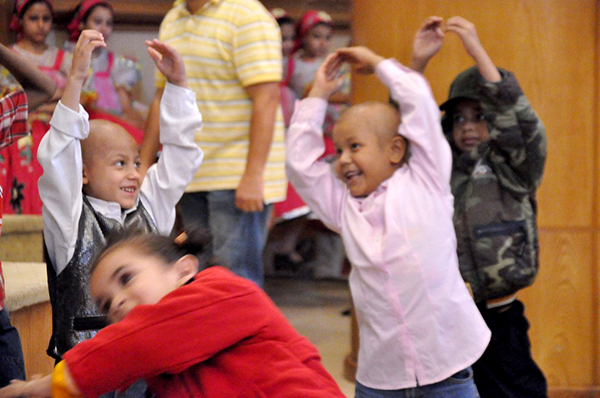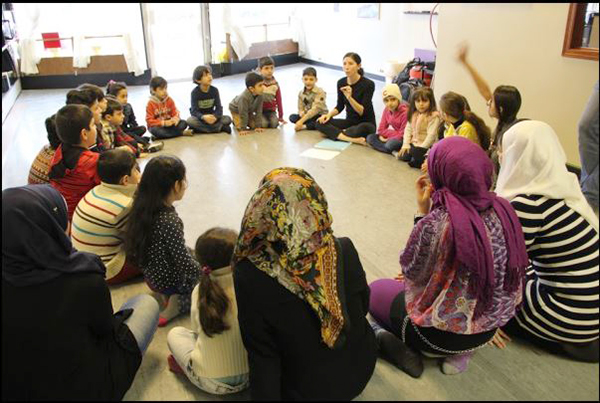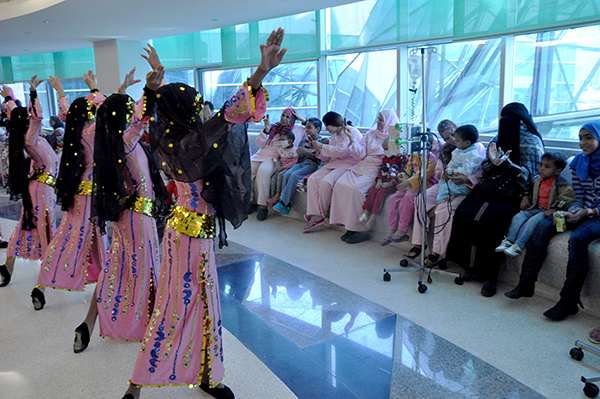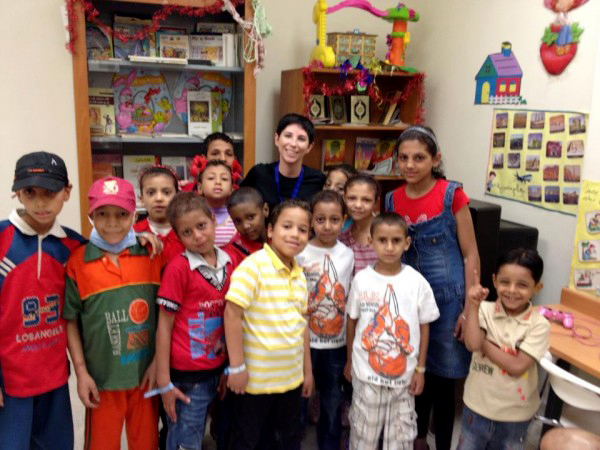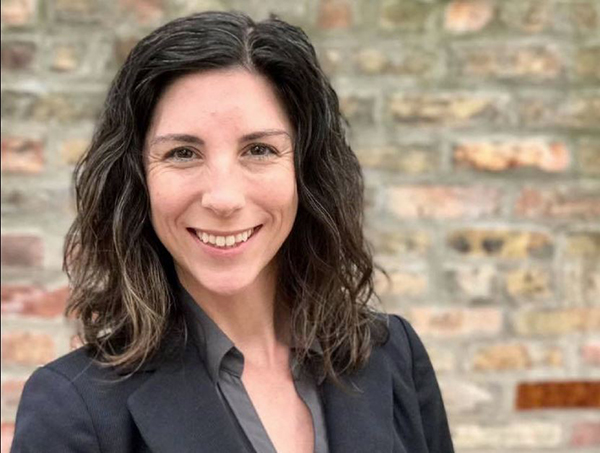Social Interventions through Dance
An Interview with Shawn Lent
BY EMMALY WIEDERHOLT; PHOTOS BY MOHAMED RADWAN
Shawn Lent is a social practice dance artist, program manager, dance educator, public speaker and facilitator based in Chicago. She believes dance has broader applications beyond traditional modes of choreography and performance. She shares her personal history, philosophy, and a few of the many social interventions she’s been involved with.
~~
What’s your journey in dance been like?
I grew up a competition kid – tap, ballet, jazz, tumbling. A breakthrough moment came in high school when a teacher handed me some Twyla Tharp videos, told me I could take my shoes off, and let me start choreographing my own pieces. All of this was new information. I didn’t know what modern dance was; a whole world opened.
In undergrad, I went further in that exploration, horrifying my parents and former teachers, who very much grew up in the Vaudevillian days when it was all about tricks. I didn’t work with people from the dance department. Instead, I worked with psychologists, joined community theater, and got involved with social issues. I explored the social impact of dance experience.
After college, I moved to London with an evangelical church program to work in a Muslim community. The idea was to bring dance and theater to a community center through the church. My first day there was September 9th, 2001. I was the only American working primarily in a Muslim neighborhood with young men age 18 to 22 who were Bengali, Afghani and Pakistani. September 11th changed my direction completely.
I went back to the states and got a Masters in arts for youth and community development. Since then, I’ve continued to do projects around the world in which dance brings people together to learn from one another.
What made you think about dance beyond performance at such a young age?
Being in a liberal arts college, I found the conversations in my ethics, sociology, religious studies or world history classes much more interesting. I found the dance conversations to be self-serving. Few of my dance friends went to college out of high school; they mostly got performing jobs in Vegas, Disney, Broadway or cruise ships. As one of the few who went directly to college, I was trying to find myself within this radical departure.
I also had little bits of success that were encouraging. In college, I choreographed a piece about facades. It explored how to break through facades and be honest. I had one peer who came out during the process to his family and the campus community. He wrote me a long heartfelt thank you for the dance experience and how it was a way for him to come out and share his true self. Projects like that showed me that dance could have impact beyond me and any talent I had.
What are some of the projects you’ve done that feel most significant?
My current project is Dance Peace, which involves working with Syrian refugees. It’s a short-term initiative to help the integration process of Syrian refugee families who have been settled near an Orthodox Jewish neighborhood. We’re helping the two sides learn to trust each other and learn from one another through public performances and education. We have scholarship programs, and we bring in guest performers who are Muslim, Arab or Jewish. We also have opportunities for the teens in the community to collaborate and perform.
Another pivotal project was working in childhood cancer. I’ve done some of this work in Chicago, but it really flourished at 57357, the national children’s cancer hospital in Cairo, Egypt. I did three years of programming there, from special camps to training artists in order to help build trust in a very multicultural institution where emotions could be tense. The hospital was free, so there were people from many different backgrounds; we had very conservative Muslim families from villages to affluent liberal families in the city. I used dance and performance as a way for the community to learn to trust one another, and also as a way for the individual children to learn to trust their own bodies. After I left, my work inspired musicians and visual artists to come in and build similar programs.
A project I just finished this summer was Global Water Dances. Working with a team in Flint, Michigan, we programmed a month of workshops and activities for young kids to seniors. It was locally lead and supported, and looks like it will continue as an annual event.
What does your day-to-day life look like?
I currently work six part-time jobs in addition to the projects I coordinate. I take things seasonally. When I look at a new project, I try to keep the scope to what I can actually handle. Dance Peace, for example, was getting big. I had to say, “Wait, this project is depending on me as some sort of director.” That’s community based work, which I decided is not for me. I’m not based in a single community. I’m here to inspire dance intervention. I realized this a couple years ago.
I’ve always been a little wary of white savior syndrome, going into a community. What does it mean to go “in” to a community? That language did not sit right with me. There’s a debate about outreach and power balances. I realized it came down to legitimacy and how long you’ve been in a community. Do you have to be “of” a community to work within it? Did that mean I needed to go back to the town in Michigan I grew up in? Do I need to live in a place for five years to work there? Ten years?
I started to read literature about different visual artist’s social practices, and they described short term projects. This made me realize I wanted to inspire change and be a catalyst, bringing in what’s needed to support long term goals. But my projects are short term, and there’s legitimacy in that.
As I talked to people in different sectors, especially those who work in peace and conflict, I saw that short term projects were exactly what they were looking for. I found a place for myself that felt legitimate and important working alongside community based artists.
Are you able to find financial sustainability in your work?
I once spoke with a career coach who looked at everything I was doing and said, “Great, you’re really busy! But how much of this do you get paid for?” Artists and project directors shy away from paying ourselves, which I’m getting better at. During 9/11, I had a realization. I had thought that the function of dancer as citizen was different than custodians, ministers, teachers, cooks, etc. I kept thinking that dancer/artist was on another level, and that I needed to go “into” a community or work “with” a community. During 9/11, I realized I am the community. I’m just a citizen, like everyone else. And I bring my skillset, not only to dance, but to the board of the hospital, for example. Once I changed my frame of mind, many more opportunities for sustained payment started to come up because I was involved in other sectors beyond the arts.
What would you like to see change in conventional dance education to make dancers see the larger applications of dance?
I’ve spoken at several colleges, and this is exactly what the topic of my talk is: thinking bigger about what you can do with dance. I tell dancers that your role as a citizen is important. The fact that there are a number of colleges and universities interested in my presentation is exciting. And when I do talk to students, no one is surprised by any of this. I think the next generation of dancers is much more politically aware and involved, taking their artistry and activism to a natural cohesion.
~~
For more information, visit shawnlent.com.

